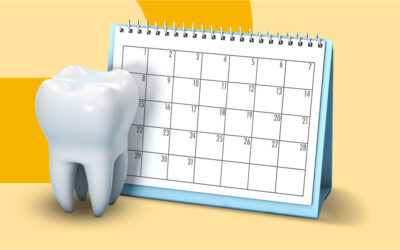
It’s no secret that broken appointments and no-shows harm both your dental practice and your patients. When patients make and later break their appointments, they postpone necessary dental care and prevent other patients from getting on your schedule. They also waste the time you’ve invested into preparing for their visits, disrupt your schedule, and cost your practice a lot of money in lost revenue.
So, how can you eliminate the no-shows completely? Unfortunately, you can’t. Unforeseen circumstances and simple forgetfulness will always lead to some broken appointments. However, to borrow from Benjamin Franklin, an ounce of prevention is worth a pound of cure. While you cannot realistically prevent all broken appointments, there are some things you can do to reduce them.
Here are 20 practical ways to reduce broken appointments:
#1 Use Friendly Automated Appointment Reminders
Life is hectic. People often confirm their appointments only to forget about them at the last minute. Send customized messages based on the patients’ preference to ensure that your schedule doesn’t fall apart at the last minute. Using automated appointment reminders will save your office from making dozens of calls and sending postcards. And, because patients appreciate a quick and convenient reminder by either text or email, it’s a simple way to reduce missed appointments and build patient loyalty. It’s a win-win for you and your patients.
#2 Offer Multiple Reminder Methods
Ensuring that your reminder will be seen is vital in preventing no-shows. Merely bombarding patients with reminders is not a solution. Instead, send fewer reminders but make sure that you are sending them in a way that patient will immediately see and reply to them.
When patients initially schedule, ask them which contact method works best for them. Would they prefer a call placed to their home or cell number? Perhaps a text message is more convenient for their lifestyle. Maybe they check their email frequently and receiving a reminder through that channel is most effective. Make sure you collect this information from every patient and send reminders that work for them.
#3 Enable Two-Way Text Messaging to Simplify Communication
Patients love the convenience of being able to text with their healthcare providers in real time. Instead of playing phone tag or waiting on hold, patients can simply send a text message to check their appointment time, verify the cost of treatment, or request to move an appointment to a more convenient time. With two-way text messaging, patients are less likely to forget to call the office in a timely manner, and your team can help patients quickly even while attending to other patients or waiting on hold with an insurance company.
#4 Let Your Patients Complete Forms Online
Allowing your patients to complete their new patient forms online is convenient for both the patient and the practice. With online forms, patients are able to avoid showing up 15 minutes early to fill out forms and then sit and wait while your scheduling coordinator updates their record in your dental software. Instead, they can complete their forms online when it’s convenient for them, either at home or anywhere on a mobile device and save time during their dental appointment. The best part is that when they take the time to complete their “paperwork” in advance, they’ll inadvertently commit to keeping their appointment. So, when patients call to schedule appointments, remember to ask them to complete the forms online and send a link in your confirmation email to make it easy for them to do.
#5 Send Save-the-Date Reminders
For added convenience, send a save-the-date reminder via email or text message as soon as you schedule an appointment. Patients can automatically sync your reminders to their electronic devices and quickly add appointments to their calendars.
#6 Schedule Patients ASAP when they Call
Aim to schedule appointments as soon as possible to improve appointment retention and patient compliance. Scheduling too far out communicates to your patients that you might be too busy for them or that the recommended treatment is neither urgent nor important. And, the more time goes by between appointments, the more likely your patients will become distracted by other priorities and lose the motivation to complete treatment. By offering immediate appointments, you reinforce the importance of timely care and keep your treatment recommendations at the forefront of their minds.
If you don’t have an immediate opening, put the patient on the schedule but offer to call if a sooner appointment time becomes available. It’s a good idea to let your patients know that your schedule fills up quickly and that, while you don’t expect any cancellations, you’ll try to “work” the schedule to get them in. This way, patients feel like you are working hard to accommodate them and don’t assume that last minute holes in your schedule are expected.
#7 Reinforce Why Treatment is Needed or Urgent
Let’s face it, dental appointments are not at the top of everyone’s priority list. It’s not unusual for a patient to schedule an appointment right after hearing our recommendations, only to get home and question whether the recommended treatment is necessary and whether it can wait. When patients are educated as to why treatment is essential and how delaying it can worsen the problem and increase the cost, they are more likely to show up and complete their dental care promptly. Before you schedule an appointment, make sure at least one member of the clinical team explains the treatment recommendations and reinforces its necessity. The best way to build long-term loyal patients and reduce broken appointments is to make sure that patients understand the reason for follow-up appointments and the benefits of keeping up with their dental health.
#8 Make Firm Financial Arrangements Before Scheduling Appointments
If a patient’s account is not settled, he or she is more likely to break an appointment. Whether there is a past due payment or a large balance that have yet to be paid, it is crucial to address the balance and either collect it or make definitive financial arrangements before another appointment is scheduled.
#9 Offer Convenient Financing Options
Patients may need flexibility when paying for dental procedures if insurance doesn’t cover the full amount or they don’t have enough to pay out of pocket. According to a recent Gallup poll, almost 30% of Americans said that they put off medical treatment due to cost. Discussing cost upfront and offering financing options will ensure that a patient will not wake up in the morning and decide last minute that dental treatment doesn’t fit into their weekly or monthly budget.
#10 Encourage Patients to Prepay
Patients who prepay are more likely to keep their appointments. Payment is a form of commitment and acts as an incentive to show up. To encourage patients to prepay, you may want to offer a small discount for prepaying, making it a win-win option for everyone involved.
#11 Reinforce your Appointment Policy When Scheduling
As you put an appointment on your schedule, politely but firmly inform your patients of your appointment policies. But instead of simply stating your “policy,” explain why you ask for advance notice in a way that you promote the practice and create scarcity. Let your patients know that your schedule fills quickly and far in advance. Stress that if they don’t give advance notice, they will not only deny someone else an opportunity to come in, they will likely have to wait a while for the rescheduled appointment.
#12 Thank Patients Who Call in Advance to Reschedule
Acknowledging desirable behaviors increases the likelihood that these behaviors will be repeated. Taking a few seconds to thank patients who give you ample notice for their thoughtfulness can go a long way toward establishing a positive relationship and reducing last minute cancellations.
#13 Avoid Moving Appointments
It might be tempting to shuffle your schedule around to try and fill an unforeseen last-minute gap in your schedule, but don’t do it. Instead, respect the initial appointment time and attempt to fill the gaps in your schedule with patients who have unscheduled treatment or who are due for recall. Moving appointments up to fill last-minute openings only delays the problem as the future openings will still need to be filled. Even worse, doing so gives patients the impression that your schedule is chaotic and that appointments can be canceled at any time.
#14 Keep Your Wait Time to a Minimum
Patients don’t like to wait. Long wait times can put a damper on patient satisfaction and affect your schedule. It’s been shown that longer wait times are directly proportional to a higher no-show rate because patients often assume that if an office does not run on time, it won’t matter if they show up. Besides, when patients are short on time, they might decide to skip their dental appointments in anticipation of a long wait. In other words, value your patients time, and they are more likely to value yours. If you don’t, those no-show patients are apt to turn into former patients.
Taking control of your schedule and fine-tuning your business practices can drastically reduce wait times. Many dental practices spend enormous amounts of time filing or scanning paperwork, entering data manually, and checking insurance while patients wait to be seated. On the clinical side, inefficient set-up and poor team communication can cause additional delays. Automating some administrative functions and streamlining your intra-office communication can improve patient care, increase patient satisfaction, and, subsequently, reduce broken appointments.
Of course, occasional delays can happen. If you start to run behind, send a quick text message to your patients to let them know you are behind schedule. This simple yet thoughtful gesture communicates to your patients that you respect them and strive to be on time for them as much as possible. In turn, they’ll be more considerate of your time when their schedule changes.
#15 Follow-Up with Unconfirmed Patients
Personally contact patients who have not confirmed through the automated system attempts. Some patients simply forget to reply back to confirm an appointment. These patients will be thankful for the personalized touch. Many patients, however, hold off confirming upcoming appointments because they are on the fence about keeping them. They might be concerned about the cost or fearful, or they might be questioning whether the treatment is really needed. When you reach out to them, you will have an opportunity to address their concerns and, possibly, save the appointment.
#16 Identify High-Risk Appointments
As you prepare for the day ahead, review your schedule to spot any patients who might make holes in your perfectly engineered schedule. Identify any unconfirmed appointments and patients with a history of missed appointments, unpaid balances, recent address changes, and negative reviews.
Sometimes, an unconfirmed appointment combined with an unpaid balance, a bad online review, or any negative remarks about the practice, can be a red flag that a patient won’t show for an appointment. Don’t keep these patients on your schedule to see if they show up. Instead, try to contact them one more time, and if you still cannot confirm them, consider double booking or opening the appointment for your ASAP list.
#17 Call Patient Who Are Running Late
Let’s be honest—we all occasionally forget where we put our keys, lose track of time, or come across unexpected commute delays. It’s only fair that we cut our patients a little slack when they run late. If a patient is a no-show 5 minutes into their appointment, don’t write them off yet —just give them a call. Not only reaching out to a patient who is running late can prevent an unscheduled gap in your day, but it could also provide a valuable opportunity to communicate that you are prepared and running on schedule. Often, when you call, the patient is in the car fighting traffic a few blocks away from your office, but even if they aren’t, a call can lead towards an open conversation about the importance of keeping scheduled appointments or planning to arrive on time in the future.
#18 Book Last Minute Cancellations
Allow your patients to hop on available openings by sending personalized text messages when their preferred appointment becomes available sooner. People who opt-in for this ASAP list will appreciate your practice for helping them to get in at a more convenient time.
#19 Fill Openings with Same Day Dentistry
Reducing no-shows and cancellations means being able to adjust when necessary. Put a system in place to manage missed appointments by filling them with patients who are already in your office. If you experience a no-show, inform the entire team immediately so that everyone can collaborate on filling the schedule. Having an intra-office communication software that can connect your team through chat messaging and put everyone on the same page will make this easier. It will not only help ensure better handoffs as a patient moves through the office, but it will keep the doctor, and the team informed every step of the way.
#20 Nourish Patients Relationships
There are plenty of opportunities to connect with your patients with ongoing communications, such as holiday greetings, birthday wishes, patients newsletters, and social media. Use all of these methods to stay in touch with your patients to provide helpful tips about oral health and keep your patients up to speed on your practice and your community involvement. When you stay engaged with your patients, they are much less likely to become no-shows because they feel connected to the practice throughout the year.
Learn how you can reduce broken appointments in your practice with YAPI. Our innovative software can help you stay top of mind with your patients, remind patients of their appointments, recall lost patients, and streamline your appointment processes so that your patients keep coming back, year after year.
Take a demo today to learn how you can employ these tips to reduce broken appointments in your practice.


